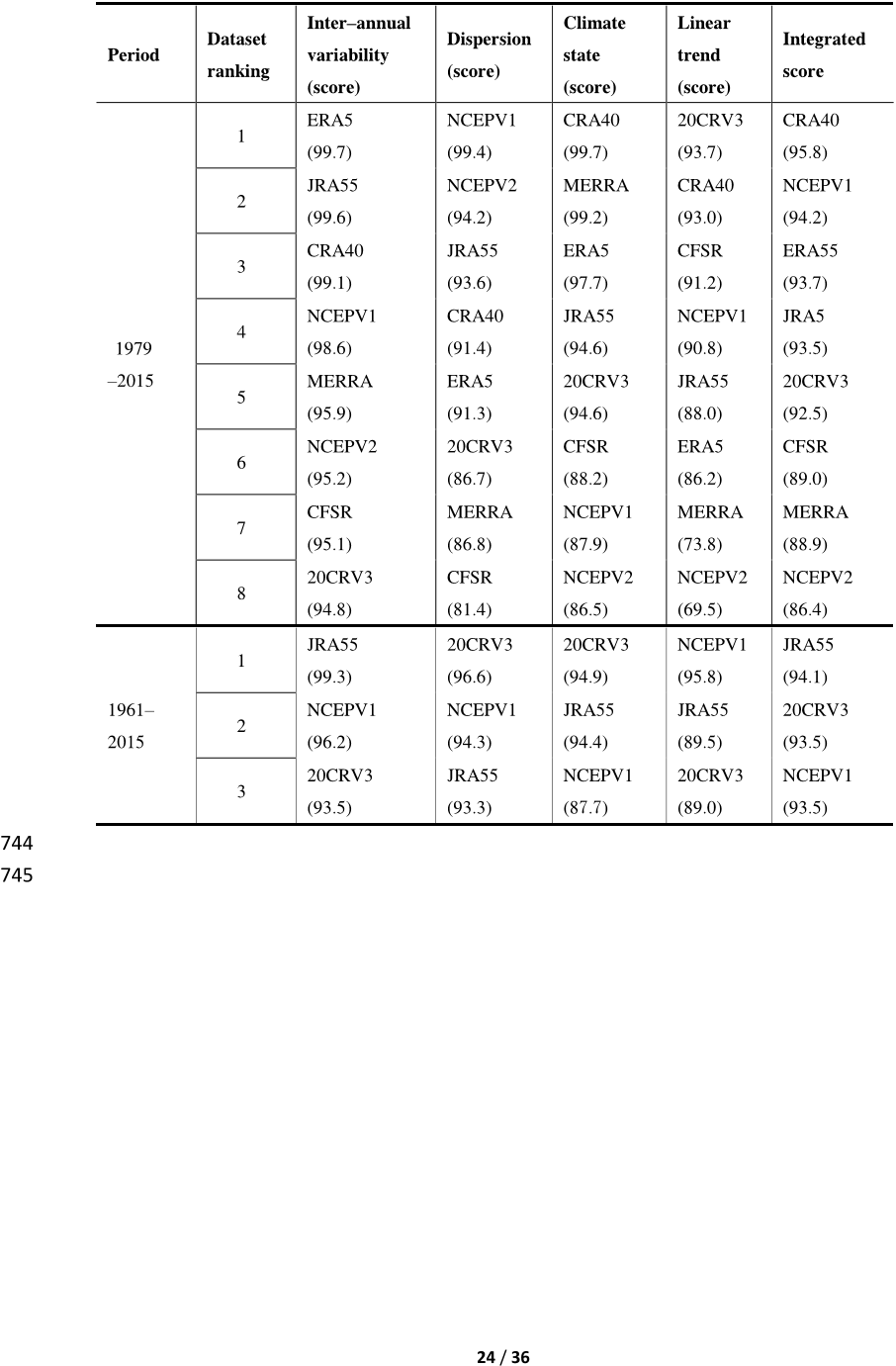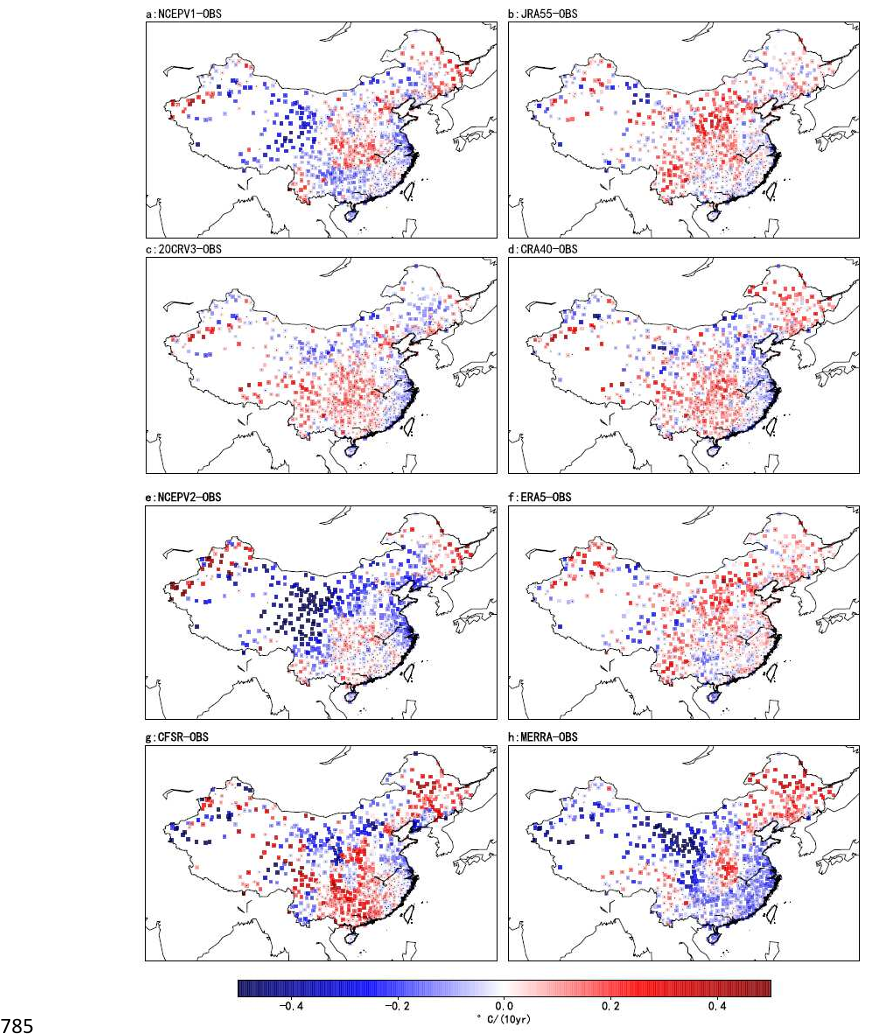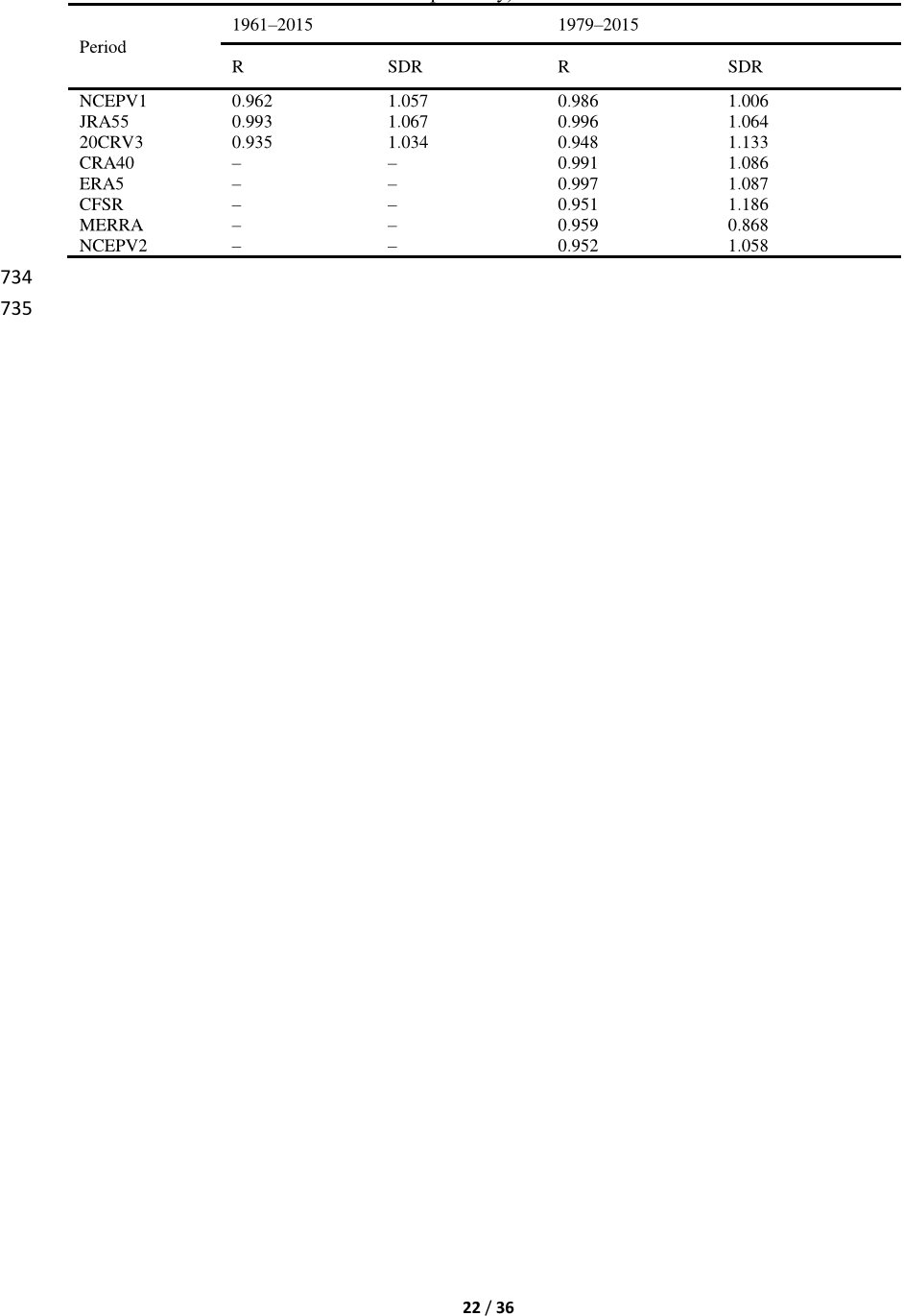Q2. What is the overall performance of the REAs in the period 1979–2015?
The integrated score of 469 20CRV3 was 92.5 and 93.5 during the periods of 1979–2015 and 1961–2015 respectively, with the 470 better performance than other REAs in linear trend (1979–2015), dispersion (1961–2015), and 471 climate state (1961–2015).
Q3. What are the disadvantages of the reanalysis?
Since these reanalyses have the disadvantages of incorporating the errors from 53 the numerical prediction models, the assimilation processes, and the observation systems 54 (Bengtsson et al., 2004a, 2004b; Zhao et al., 2010; Zhao et al., 2015), the reliability of the reanalysis 55 data needs to be proven on global and regional scales.
Q4. How did the authors evaluate the applicability of the reanalysis data?
In this study, the authors evaluate the applicability of the reanalysis data by using the urbanization 125 bias–adjusted observational data from 1961–2015 across mainland China.
Q5. What are the REA biases in correlation, standard deviation, climate state and linear trends?
527 (4) The REA biases in correlation, standard deviation, climate state and linear trends generally 528 increase with increasing elevation of stations.
Q6. What is the average of the data used in the reanalysis?
The time series, correlation, standard deviation, 177 climate state, and linear trends of the reanalysis data are evaluated against the observations.
Q7. What are the reasons for the lower SATs of CRA40, NCEPV1?
The 512 cold biases of CRA40, NCEPV1 and JRA55 are mainly caused by the lower SAT in summer, 513 whereas those of NCEPV2, CFSR, and ERA5 are mainly caused by the lower winter mean 514 temperature.

















